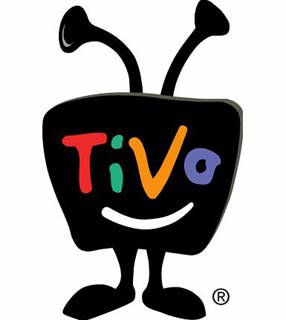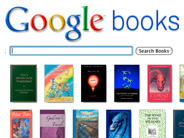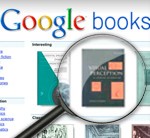
Strategy under The Law of Disruption requires attention to detail.
Two recent articles with competing views of the fate of Hollywood content producers caught my attention. The first, by CNET’s Greg Sandoval, reiterates long-standing predictions that for current industry giants the Internet spells doom. “[T]he end is coming,” Sandoval concludes, “for DVDs, traditional movie rentals and yes, much of your cable money…..”
The second, from New York Times reporter Bill Carter, reported surprising results from a recent change by ratings agency Nielsen. In determining whether consumers are watching commercials and, therefore, what “rating” to assign a broadcast program, Nielsen now includes DVR views within three days of airing if commercials aren’t skipped.
The surprising result is that more than half of all DVR viewers don’t skip the commercials, even though they have a button that lets them do so with relative ease. For some shows, including “Heroes” and “Fringe,” actual ratings jumped after taking the new data into account. The DVR, seen as the destroyer of commercial television, may save the major networks, which are averaging a 10% increase in ratings under the new system. “It’s completely counterintuitive,” the article quotes the president of research for NBC. “But when the facts come in, there they are.”
Ah, facts. The hobgoblins of pundits everywhere.
So is Hollywood dead or is it doing better than ever? Let’s split the difference here. The content industries are clearly in crisis. But their doom is not inevitable.
Sandoval is right that digital technology, held back for years by litigation and cost, is now in the midst of thoroughly disrupting the entire content supply chain, from creation through consumption. The lawsuits have failed (the MPAA recently fired its general counsel in a housecleaning) and, thanks to Moore’s Law, digital content is everywhere.
Sandoval thinks that the availability of cheap copying and rebroadcasting technologies (file-sharing, streaming, and of course the Internet everywhere) poses an insurmountable foe for the content industry. After the fall, he says, “What will come out the other side is still uncertain but will likely be very much smaller.”
I don’t agree. In fact, I think the answer is just the opposite, and the DVR data Nielsen is now collecting (in the teeth of initial opposition from the broadcasters, who thought it would lower their commercial-viewing share points) gives the best clue as to why. More on why in a moment.
First, let’s be clear on the source of the crisis. Though it’s convenient for media executives to see it this way, consumers aren’t evil–they aren’t breaking the rules because they hate rules. They’re breaking them because they want something they aren’t getting. And they don’t understand why broadcasters would object to their efforts to enjoy entertainment content however they like. Legally speaking, we’re all felons. But who taught us to think of broadcast content as something that magically appeared on the TV for free in the first place?
Consumers break the industry rules (and, often, the law of copyright) not because they want to destroy the industry but because they have access to technology that lets them do something they want to do but otherwise can’t. Consumers want to watch what they want, when they want to, on whatever device they want it.
When the only way to do so was on the broadcaster’s timetable, on media (over the air, cable, videocassettes, DVDs, Blu-Rays) controlled by content owners, paid for by advertiser support, media purchase, cable subscription fees, or all of the above, that is the way media was consumed.
Now that there are other options–including legal ones such as Hulu (ad-based), iTunes (fee-based) and Netflix (subscription-based) that remove some of the artificial constraints on time, quality, media, and frequency of viewing. Consumers are embracing these, even as they continue, in smaller numbers, to buy media versions of movies and TV programs.
Here’s the key point: they are consuming much more media, whether legally or otherwise. They want more choices and more content. If Hollywood won’t give it to them, the Internet will. But it’s not as if we really care who gives us what we want. We’re willing to make all manner of trade-offs on quality, cost, ease-of-use. If, that is, there is a real choice.
Consumers will always reject artificial constraints where technology allows them to do so. Inherently, they understand that information is an inexhaustible commodity–that no matter how and how often and in what quality they watch “Star Wars” or last week’s “Flash Forward,” the programming is still intact, undamaged, and available any time in the future for them or any other viewer–simultaneously, if desired.
Now that most everything has been translated to bits (or starts life that way in the first place), the curtain has been lifted.
There are two ways to make consumers pay for this content in a manner that that make it profitable for creators, distributors and others in the supply chain to continue to produce it. One way, the pre-Internet way, was to give them no choice. Watch these commercials because you can’t skip them. Buy these videotapes because there’s no other media. Pay your cable bill because that’s the only way to get the channels you want.
The second way, which will now determine who wins and who loses in the content industry of the future, is to use whatever information you can get your grubby hands on about what consumers are actually doing with technology and learn from it.
Now that both the content and information about the content have become digital, the media industry needs to learn what it is that consumers actually want–that is, what consumers actually value–and offer it to them.
The DVR data, as a starting point, tells us two interesting things. First, that many consumers don’t mind watching commercials, either because they like them, or they’re too dazed to skip them, or because they understand that the commercials subsidize the programming. Media buyer Brad Adgate, quoted in the Times piece, notes something that hasn’t changed about the viewing experience: “It’s still a passive activity.”
(To exploit that passivity, sponsors are going back to the original model of embedding product placements and commercials into the programming–a la “Top Chef” and “The Biggest Loser” and probably every other show that does it with more subtlety.)
But the second and more interesting insight from the DVR data is that resisting information because you think it will deliver bad news is a self-destructive behavior, especially during times of industry transformation.
Ten years into the digital revolution, Hollywood is still firmly stuck in the first stage of grief–denial. Not only are they resisting change, they are resisting any knowledge about how the change is taking place. Even when, as here, that knowledge tells them something valuable about how to thrive in the emerging new order.
(History repeats itself: recall the industry reaction to the VCR, which MPAA President Jack Valenti famously equated to the Boston Strangler–the violent, insane destroyer of his industry. In retrospect, the VCR saved Hollywood from itself.)
I don’t agree with Sandoval’s conclusion that the Hollywood of the future “will likely be much smaller.” The popularity of YouTube and other user-produced content services, the explosion of cell phone apps for enjoying content, the success of Indy studios and niche channels, and the continued interest of consumers in “collector edition” and other high-end media artifacts all suggest that the public’s appetite for entertainment is unfathomable.
Three networks, we have already learned, aren’t enough. Hundreds of specialty cable channels aren’t enough. Content produced and delivered on a take-it-or-leave-it basis in a vacuum of consumer insight beyond gross demographics and what-worked-last-year strategies is no longer a sustainable model.
But what will come out “the other side,” as so often happens when disruptive technologies rewrite the rules, will be a much bigger industry, with more profits to share. True, the Hollywood of tomorrow won’t look much like the Hollywood of today. But then, the Hollywood of today has almost nothing in common with the original industry model, dominated by the studio system and a handful of powerful decison-makers. For one thing, it’s a whole lot bigger by any measure. Technology makes things better–always, if eventually.
Here’s what else the DVR data tells us. In the future, information about media consumption will prove as valuable as the entertainment itself. Strike that: it’s already happened. For the first fifty years of its existence, TV Guide, which merely printed local listings summarizing what was on the few channels a household received, made more money than all three of the major broadcast networks combined.
Existing players in the collapsing Hollywood supply chain can either learn new ways to add value and thrive, or they can continue to resist the inevitable, close their eyes to valuable data, insist on business as usual, sue everyone and everything, and go the way of buggy whips and analog broadcast. Add value, as a client once summarized it for me, or adios.
I know which one I would choose. But then, I don’t run a multi-billion dollar public company.
Yet.
 I write today on CNET (see “Gripes over Google Books go Technical”) about the Department of Justice’s filing last week in the Google Books case. The Amended Settlement Agreement (ASA), released in November, will be discussed by the parties at a fairness hearing on Feb. 18th.
I write today on CNET (see “Gripes over Google Books go Technical”) about the Department of Justice’s filing last week in the Google Books case. The Amended Settlement Agreement (ASA), released in November, will be discussed by the parties at a fairness hearing on Feb. 18th.
 I’m fascinated by the firestorm that has erupted over what sounds on paper like the most boring combination of a legal and technical discussion: the recent appeal by Hollywood for a waiver from the FCC’s Selectable Output Control (SOC) rule.
I’m fascinated by the firestorm that has erupted over what sounds on paper like the most boring combination of a legal and technical discussion: the recent appeal by Hollywood for a waiver from the FCC’s Selectable Output Control (SOC) rule.

